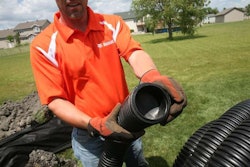
A company with steady cash flow is a company with an effective billing process.
For many landscaping companies, billing usually is an afterthought, something best handled by the back-office staff. Yet, for those businesses willing to invest the time and energy into building a more effective billing process, the rewards are worth the effort. Better billing practices facilitate a more long-term cash flow. A reliable cash flow allows a company to set itself apart from those competitors still employing a per-price, per-cut invoicing method.
Nuts and bolts
Effective billing practices begin with an accounting system, and for most companies, this is QuickBooks. Carol Rowald, owner of Heart of Texas Landscape & Irrigation, located in Belton, Texas, and a 2011 TLC Landscaper of the Year Finalist, has used this software for years.
“One of the biggest advantages is QuickBooks’ ability to get information quickly,” Rowald says. “We can get lots of updated reports instantly and can easily sync them with our accountant.”
“QuickBooks is by far the leader for billing and keeping track of account receivables and payables,” agrees Tony Bass, the owner of Fort Valley, Georgia-based, Super Lawn Technologies. He points out, however, there will come a time when the software loses its efficiency edge.
“As businesses gain more clients and administrative duties – and functions begin taking more and more time – one day, these tasks will overwhelm the time spent with your clients,” he says.
When this happens, he recommends purchasing additional software such as CLIP to streamline and automate repetitive functions such as scheduling, job costing or centralized document storage and tracking.
YardApes Landscaping goes one step further, combining effective billing practices with stellar customer service. “We use QuickBooks and customer relationship management software (CRM) because it gives everyone a feel for the customer, not just credit and collections,” says Elaine Lord, office manager for the New Milford, Connecticut, landscaping company, another 2011 TLC Landscaper of the Year Finalist.
Regulating cash flow
Once a system is in place and running smoothly, the next question is usually how to best initiate timely and regular payment receipts. Should the company offer incentive discounts? If so, what type and what clients get which the discount?
Quickbooks provides information quickly and clearly.Annualized contracts are one way to keep cash flowing all year round. Heart of Texas calculates a client’s annual costs, divides the total by 12 and then bills a set fee each month. The advantage to this is two-fold. Not only does the client know just how much to pay each month, but the company’s cash flow is then spread out across the entire year.
Prepayment is another option where some companies will offer a 1- to 5-percent discount off of the total bill if payment is received by a certain time.
“When you’re sitting on cash before the season starts, you can hire more people and buy more materials,” Bass says.
He also recommends that his clients get upfront deposits, especially for those companies located in variable weather areas. “The contractor with a 50-percent project deposit is in a much better position than the contractor who only has a 10-percent deposit and is still waiting for the weather to clear up.”
Regular payments also come from smart timing. “If you bill at the beginning of the month, you’ll get money by the end of month. Bill at the end of the month, you have to wait an additional 30 days to get paid,” Rowald advises.
One frequently overlooked enticement involves offering time as a commodity. “Maintain the client’s position on the schedule,” Bass says. “Having a certain time on the schedule is a huge incentive for some folks.” For example, many residential clients prefer their lawns mowed on Thursdays or Fridays, where conversely, commercial clients prefer their properties to look good on Mondays or Tuesdays.
“This means either premium billing for those days of the week or reserving your schedule for those who will prepay,” Bass says.
Handling clients who don’t (or won’t) pay
Maintaining regular cash flow also means becoming comfortable with the uncomfortable side of billing — collections.
“You should have a sequence of events to follow each and every time someone is late — an escalating series of actions from a letter to a phone call, moves toward collections and eventually, placing liens,” Bass says.
Tony Bass, owner of Super Lawn Technologies“At the least, suspend services and use the leverage of growing grass and the expanding weed population to teach your clients you are serious about prompt payment,” he advises.
For chronic late payers, Lord recommends bypassing multiple past-due invoices in favor of picking up the phone.
“I find it’s more effective to call than send a collection letter. It makes things more personal, and it gives me the ability to solve a problem the customer might be having,” Lord says. Customers seem to appreciate it, and the time spent talking has helped YardApes build a better, long-term client rapport, she says.
“It’s hard to keep putting payment off when you have a nice relationship with someone,” says Rowald, who offers partial payment options or will pick up larger checks at a client’s office if it generates a faster turnaround time.
Heart of Texas’s extensive business connections also mean Rowald frequently runs into clients who owe her money at networking meetings. “Don’t intimidate or embarrass people when this happens,” she cautions.
“At all costs, keep up good business relationships because you never know what’s going on inside of a client’s business.” Many times, her clients will pull her aside to let her know to expect payment by the end of the week.
Even successful landscaping companies must sever client relationships from time to time, however.
Carol Rowald, owner of Heart of Texas Landscaping“As long as customers send me X dollars to bring their balance down, and they send it regularly, I will work with them. If not, I will send them to collections,” says Lord, who works closely with a collection agency she found through the National Association of Landscape Professionals (NALP).
Rowald takes another approach. “If you have a client who you are always chasing down to be paid, give them a 30-day notice and let them become [another landscape contractor’s] headache,” she says, noting that in any company portfolio, there is a certain percentage of clients who pay like clockwork, another percentage who drag things out and a final percentage who won’t pay. “Is that last percentage worth your time?”
Minimizing headaches from the start
Possibly the best way to minimize problem payers involves taking the time to pre-screen new clients at the start of each business relationship.
“When I get a call from a new customer, I try to find out as much as I can, such as finding out who did the lawn before and why they are switching so we don’t make the same mistakes” Lord says.
10 billing tips to help increase monthly cash flow
1. Move from the classic, per-cut/per-visit invoicing approach to an annualized contract or ongoing service agreement.
2. Annualized maintenance contracts mean customers know their monthly payment and you know your monthly cash flow.
3. Offer prepayment discount options or auto pay options through a customer’s credit card.
4. Billing at the beginning of the month means payment by the end of the month.
5. Get deposits for the bigger projects and then bill on completion.
6. Cut checks are not released checks. When a client says the check is cut, ask when it will be released.
7. Offer to personally pick up larger checks.
8. Establish a sequence of collection events at 10, 30, 45 and 60 days when customers don’t pay.
9. Constantly chasing a client for payment? Give them a 30-day notice, and if the bill isn’t paid, end the relationship.
10. Always be pleasant and professional, even when severing a client relationship.
EDITOR’S NOTE: This article was written by Gwynneth Anderson.









